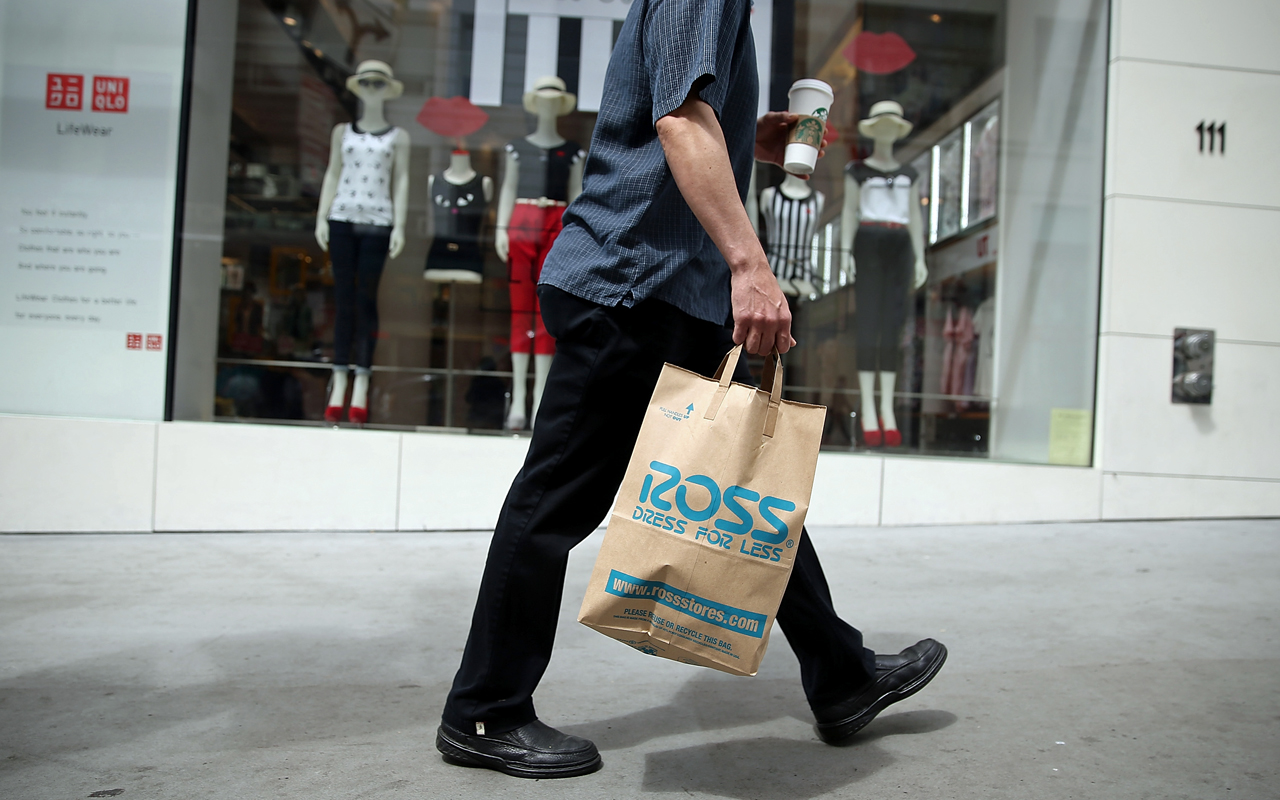The 9 Best Stocks of America’s Last Bear Market
It’s official.

It’s official. The Nasdaq Composite has waded all the way into bear-market territory, now down 20% from its late-September peak. The Dow Jones Industrial Average and the Standard & Poor’s 500-stock index aren’t far behind.
Whether the fourth-quarter selloff is merited doesn’t entirely matter. If the crowd believes the rout suffered over the course of the past three months is the shape of things to come, stocks will lose more ground as investors create the very bear market they fear. It’s a self-fulfilling prophecy.
But here at the precipice of seeing the market’s condition shift from bad to worse, remember: Not all stocks have to lose ground, even if the tide is going out. One only has to look at the nine big stocks that managed to gain ground between October 2007 and March 2009 – America’s last bear market – to appreciate that some companies have staying power even in rough environments.
Here are nine S&P 500 stocks that actually gained in the face of the 2007-09 bear market. Notice in all nine cases, there was something unique about these organizations that shielded them from the full impact of economic woe. And in some cases, they still look properly positioned to fight off another bear attack.
Data is as of Dec. 24, 2018.

Advance Auto Parts
- Market value: $10.9 billion
- 10/07-3/09 return: 3.5%
Consumers buy new cars when the economy is booming. But when it’s in a slump, people are apt to make the more cost-effective decision to repair a vehicle rather than replace it.
That’s a key part of the reason Advance Auto Parts (AAP, $148.92) shares were able to at least hold their ground between late-2007 and early-2009. While not stunningly so, the auto parts retailer grew its bottom line during that rough patch.
Earnings unsurprisingly started to trend lower in 2016, right around the cyclical peak of automobile sales in the United States. You know it as “peak auto.” Not only do newer cars not need as many repairs, but years of improving quality means most vehicles have remained on the road without needing much maintenance.
The tide could soon turn, though. “Despite the record high number of new cars, there’s been tremendous growth in very old vehicles,” Lang Marketing automotive consultant Jim Lang told Commercial Appeal. He adds, “In fact, vehicles 12 years old and older account for almost half the vehicles on U.S. roads.”
Between those exceedingly aged vehicles and a large swath of vehicles on the verge of becoming two, three and four years old, a headwind could turn into a boon for auto parts stores.

Gilead Sciences
- Market value: $78.1 billion
- 10/07-3/09 return: 3.9%
Consumers will postpone the purchase of a new automobile when money is tight. They’ll eat out less and eat at home more during a recession.
One thing they tend not to skimp on regardless of the environment, however, is health care.
Granted, Gilead Sciences (GILD, $60.54) had something of an edge a decade ago when it defied the previous bear market. The antiviral piece of its drug portfolio was on fire, led by then-new drugs Truvada and Atripla. Competitors had no answer. Gilead also was a beneficiary of 2007’s bird flu epidemic. Although Roche Holdings (RHHBY) actually owned the rights to the Tamiflu being used to combat the disease, it owed Gilead royalties on sales of the treatment.
Clearly, Truvada is no longer a major growth engine, and we’ve not seen the threat of an epidemic in a while. Gilead shares have in fact been backpedaling since 2015 when it became clear its hepatitis C therapies, Harvoni and Sovaldi, wouldn’t be able to sustain their sky-high prices. Even before regulators had a chance to intervene, competitors did.
But in many regards, the pharmaceutical giant once again has some exclusives in its back pocket that the drug-buying market will find a way to afford. Gilead is prioritizing the development of its NASH (nonalcoholic steatohepatitis) pipeline, and new CEO Daniel O’Day – the now-former head of Roche – could finally give the company some much-needed strategic direction that investors can latch onto.

Walmart
- Market value: $249.8 billion
- 10/07-3/09 return: 5.1%
- Walmart (WMT, $85.82) meets the needs of value-minded consumers. That’s not a criticism; it’s a reality. Its value proposition looks even more compelling to a larger chunk of the population when saving money really matters.
The numbers verify the premise. Walmart already was in full-blown expansion mode before the Great Recession, but its revenue growth never slipped below a year-over-year rate of 7% until the end of 2008
Already in full-blown expansion mode at the time, the retailer’s revenue growth never slipped below a year-over-year rate of 7% until the end of 2008, when the recession was coming to a close. Net income grew every single quarter during the previous recession, also not slipping to a year-over-year decline until the bear market was winding down and consumers were willing to splurge a bit again.
Things have changed a little since then. Amazon.com (AMZN) has gotten bigger and Target (TGT) has gotten better. Walmart also is standing in the shadow of five years of shrinking profits.
But the world’s biggest retailer looks like it finally has a grip on where it went wrong. And for the first time in a long time, earnings are expected to grow, from $4.42 to $4.84 per share next year. An economic headwind could actually create a tailwind for WMT, right as the company is starting to gain traction with its internal turnaround effort.

Edwards Lifesciences
- Market value: $29.3 billion
- 10/07-3/09 return: 7.0%
- Edwards Lifesciences (EW, $139.92) is another health-care company, more or less in the same non-cyclical boat as Gilead Sciences. It’s no carbon copy of Gilead, though.
Edwards Lifesciences is first and foremost a heart valve company, though it also makes all the tools and ancillary equipment to go along with its core products. Given that its wares are not only life-saving but also usually paid for by insurers, a cyclical headwind means little to Edwards. It certainly wasn’t much of a problem 10 years ago, when the company posted results such as a 33% year-over-year jump in profits for the quarter that ended in September.
And EW may be in a position to accelerate revenue growth in the coming year.
He’s arguably a bit biased, but CEO Michael A. Mussallem said in front of an investor conference held in early December, “During the year, we look forward to a number of significant milestones, including the PARTNER 3 Trial results, new product launches, and progress on multiple clinical trials and early feasibility studies.”
The PARTNER 3 trial could translate into a newly approved product by the end of 2019. But in the meantime, Edwards Lifesciences is looking for sales growth of between 9% and 12% to drive profit expansion at an even faster clip.

Ross Stores
- Market value: $28.2 billion
- 10/07-3/09 return: 8.2%
Walmart may provide some value when consumers are nervous about their finances, but Ross Stores (ROST, $76.30) offers even more.
Ross Stores is an off-price retailer, in the same league as TJX Cos. (TJX) brands TJMaxx and Marshalls. The company operates more than 1,600 stores, most of which are call Ross Dress for Less, but a handful of which are branded as dd’s Discounts. The company has done $15 billion worth of business over the past four quarters.
Ross is the kind of retailer that theoretically should thrive when times are bad, and it does. But it’s difficult to determine whether Ross thrives specifically because consumers are feeling pinched. The apparel retailer has posted revenue growth in every quarter except one since before the prior recession/bear market got rolling, and the same goes for income. (The clunker was the final quarter of 2013, when retail spending somehow slowed for a short time primarily due to unusually harsh winter weather.)
Given Ross Stores’ consistent growth in good and bad environments alike, it’s not surprising that investors kept it buoyed when other stocks were fighting a losing battle.

Illumina
- Market value: $40.1 billion
- 10/07-3/09 return: 11.6%
The right biotechnology advancement can overcome even the worst market environment, and Illumina (ILMN, $272.46) was no exception to that rule a decade ago.
Illumina is one of a handful of companies that has commercialized genome sequencing. It was new and exciting then, providing a solid bullish undertow for the stock between 2007 and 2008. And although the DNA analysis market has matured tremendously over the course of the past 10 years, there’s still a long growth path ahead.
Much of that growth will be the result of a shift in consumer preferences and the industry’s capabilities.
To date, a great deal of the demand for Illumina’s services has been for genealogical purposes, as the popularity of platforms like Ancestry.com has grown. But as costs continue to fall and functionality continues to improve, the outfit will be able to cost effectively do more medically focused genomic work.
Simultaneously, the introduction of the company’s latest genome sequencer, the NovaSeq 6000, continues to accelerate revenue growth. Last quarter’s sequencer sales reached a three-year high, but CEO Sam Samad pointed out at the recent ESI Evercore conference that only a small number of customers have made the upgrade yet. In light of how drastically the new NovSeq equipment can lower sequencing costs, demand for the sequencers – and the consumables that work with them – should continue to grow through 2019.

Concho Resources
- Market value: $19.0 billion
- 10/07-3/09 return: 15.5%
- Concho Resources (CXO, $94.90) was something of an anomaly in 2008.
It ran into the same economic headwind other companies did at the time, though it felt the pain of that rough patch via the plunging price of oil. But unlike so many of its peers, neither the company nor its stock was crushed by the challenge.
A refresher: After crude oil futures peaked above $160 per barrel in the middle of 2008 (arguably helping the recession get started), they fell to a low under $50 per barrel by early 2009. Natural gas met a similar fate. And at the time, most oil and gas companies weren’t prepared to deal with prices not seen since 2004. Concho was an exception.
It wasn’t easy, nor was it pretty. The company’s results were volatile. But Concho’s dealmaking for properties in the then-red-hot Permian Basin and navigation of the energy market’s meltdown was handled skillfully by CEO Tim Leach, who still happens to be at the helm.

AutoZone
- Market value: $20.7 billion
- 10/07-3/09 return: 22.0%
For the same reason rival Advance Auto Parts managed to hold up in the wake of the subprime mortgage meltdown, AutoZone (AZO, $822.82) did too – and in fact, it did it better. Year-over-year operating income grew every quarter during the previous recession, as did revenue, as if the downturn wasn’t even happening.
Like Advance Auto Parts, AutoZone hasn’t done nearly as well since 2017 as it had in its recent past. Record-breaking sales of new cars since 2015 has subsequently left a record-breaking number of relatively new cars in use, which generally don’t need repairs.
They soon will, however.
Of the more than 100 million new cars that have been sold to U.S. drivers since 2012, roughly half of them are now three years old, or older. That puts them around the 60,000- to 70,000-mile mark (at least), which is when repairs and maintenance start to become mandatory. Given the size of the investments made in many of these vehicles and the record $1.26 trillion that U.S. consumers still owe on their vehicles, repairs rather than replacement might be the only viable option for most car owners.

Netflix
- Market value: $101.6 billion
- 10/07-3/09 return: 68.9%
Finally, Netflix (NFLX, $233.88) shrugged off the 2008 recession like it wasn’t even happening.
In retrospect, it’s not as surprising as it sounds. Netflix wasn’t new at the time, but that was the point in time during which Netflix began offering online access to shows and movies. So it was unusual, but well-received once consumers began to understand it.
Little did consumers know that a real estate meltdown would prompt a bear market as well as a recession, in turn sending most people scrambling for low-cost entertainment. For only a few bucks a month, people could still enjoy relatively new titles plus a large library of TV and movie classics. The business model was so new that no rival was ready to stand in its way.
That’s clearly not the case anymore. Amazon and Hulu are both head-to-head competitors, and skinny bundles like those offered by Sling TV are akin and readily available. On a sheer value and depth-of-content basis, though, Netflix is still the powerhouse in the streaming business. It may have the most to gain if consumers tighten up their purse strings and choose to stay home rather than step out for a diversion.
Profit and prosper with the best of Kiplinger's advice on investing, taxes, retirement, personal finance and much more. Delivered daily. Enter your email in the box and click Sign Me Up.
-
 'Donroe Doctrine' Pumps Dow 594 Points: Stock Market Today
'Donroe Doctrine' Pumps Dow 594 Points: Stock Market TodayThe S&P 500 rallied but failed to turn the "Santa Claus Rally" indicator positive for 2026.
-
 The Wealth Equation: Balancing Money and Stress
The Wealth Equation: Balancing Money and StressSponsored Don’t let assets be a liability that strains your family.
-
 Is Your Emergency Fund Running Low? Here's How to Bulk It Up
Is Your Emergency Fund Running Low? Here's How to Bulk It UpIf you're struggling right now, you're not alone. Here's how you can identify financial issues, implement a budget and prioritize rebuilding your emergency fund.
-
 'Donroe Doctrine' Pumps Dow 594 Points: Stock Market Today
'Donroe Doctrine' Pumps Dow 594 Points: Stock Market TodayThe S&P 500 rallied but failed to turn the "Santa Claus Rally" indicator positive for 2026.
-
 Stocks Struggle for Gains to Start 2026: Stock Market Today
Stocks Struggle for Gains to Start 2026: Stock Market TodayIt's not quite the end of the world as we know it, but Warren Buffett is no longer the CEO of Berkshire Hathaway.
-
 Stocks End Volatile Year on a Down Note: Stock Market Today
Stocks End Volatile Year on a Down Note: Stock Market TodayAfter nearing bear-market territory in the spring, the main market indexes closed out the year with impressive gains.
-
 Stocks Extend Losing Streak After Fed Minutes: Stock Market Today
Stocks Extend Losing Streak After Fed Minutes: Stock Market TodayThe Santa Claus Rally is officially at risk after the S&P 500's third straight loss.
-
 Santa Claus Rally at Risk as Tech Stocks Slump: Stock Market Today
Santa Claus Rally at Risk as Tech Stocks Slump: Stock Market TodayThe Nasdaq Composite and Dow Jones Industrial Average led today's declines as investors took profits on high-flying tech stocks.
-
 Gold and Silver Shine as Stocks Chop: Stock Market Today
Gold and Silver Shine as Stocks Chop: Stock Market TodayStocks struggled in Friday's low-volume session, but the losses weren't enough to put the Santa Claus Rally at risk.
-
 The Santa Claus Rally Officially Begins: Stock Market Today
The Santa Claus Rally Officially Begins: Stock Market TodayThe Santa Claus Rally is officially on as of Wednesday's closing bell, and initial returns are positive.
-
 'Humbug!' Say Consumers, Despite Hot GDP: Stock Market Today
'Humbug!' Say Consumers, Despite Hot GDP: Stock Market Today"The stock market is not the economy," they say, but both things are up. Yet one survey says people are still feeling down in the middle of this complex season.
